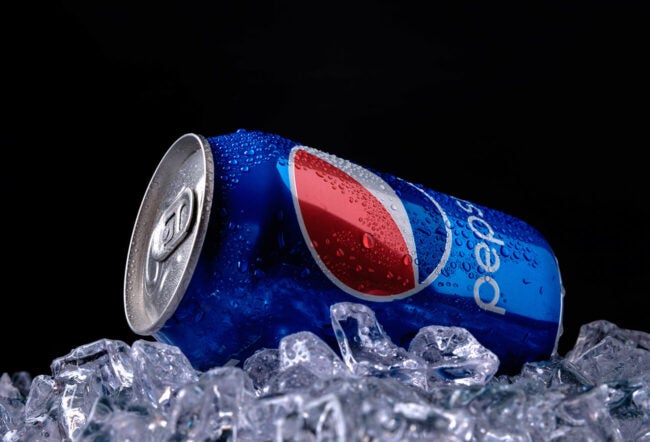Paula Courtney found “wow” when she took her daughter to the employee washroom at her local grocery store. A sign by the door instructed workers to remain physically by the side of any customer experiencing a problem until that problem was resolved. Later, when Courtney was in the checkout line, the cashier noticed Courtney’s blueberries were squishy. The cashier insisted on walking back to the produce section to find a fresh box.
For Courtney, chief executive of The Verde Group, a Toronto retail research and consulting firm, that was a “wow” shopping experience.
New Wharton research finds that 35% of shoppers have had an extraordinary — or wow — retail experience in the past six months. But in order to hit that mark, retailers must deliver on as many as 10 different elements of the shopping experience simultaneously. Retailers are rewarded when shoppers tell others about their experience. “Peoples’ expectations are pretty high. It’s easy to [fall short of those expectations], and hard to eclipse [bad experiences, even] with something that’s over-the-top,” says Wharton marketing professor Stephen Hoch. “Bitching and moaning is more common than praise.”
Wharton’s Jay H. Baker Retailing Initiative teamed with Verde and the Retail Council of Canada to discover how retailers can create an extraordinary experience for shoppers. In an online survey, 1,006 shoppers in the United States and Canada were asked: “Can you think of a shopping experience that you had in the past six months or so that was especially great, in that the experience created delight and surprise for you in any way?”
A report based on the research, titled “Discovering ‘WOW’ — A Study of Great Retail Shopping Experiences in North America,”points to five major areas that contribute to a great shopping experience:
- Engagement: being polite, genuinely caring and interested in helping, acknowledging and listening.
- Executional excellence: patiently explaining and advising, checking stock, helping to find products, having product knowledge and providing unexpected product quality.
- Brand Experience: exciting store design and atmosphere, consistently great product quality, making customers feel they’re special and that they always get a deal.
- Expediting: being sensitive to customers’ time on long check-out lines, being proactive in helping speed the shopping process.
- Problem Recovery: helping resolve and compensate for problems, upgrading quality and ensuring complete satisfaction.
In all, respondents mentioned 28 elements of a great experience, such as salespeople who “immediately acknowledged you” or “could easily explain a product to you” or “seemed genuine.”
Pulling It All Together
Courtney says the typical wow experience has 10 of those elements at the same time. Further complicating the mission for retailers is the fact that the most important elements vary among individuals. “It’s like a perfect storm,” she says.
Retailers can focus on creating a “bedrock,” or platform, based on the five major pillars of retail satisfaction to increase the probability of creating a wow experience. According to the research, four in five shoppers will tell an average of three other people about a wow experience.
Brand experience and engagement are the strongest drivers of loyalty, according to the survey. The top response was related to engagement, with 63% of those reporting that during their great shopping experience, store employees were “very polite and courteous.” Salespeople who were knowledgeable about the product in the store got the second-highest response at 55%. As for execution, about half of those experiencing a wow shopping trip stressed store employees’ familiarity with products, their advice and the level of interest in the customers’ needs as essential to a great shopping experience. Slightly fewer — two in five — pointed to surprisingly great product quality and store representatives who go out of their way to check stock as crucial elements of exceptional shopping.
Brand experience includes store design and atmosphere, consistently great product quality, making customers feel they’re special and the sense that customers always get a deal. Hoch says this element is somewhat “fuzzy” because chain stores, which account for the majority of shopper visits, often provide trendy merchandise and stylish store environments, but also run the risk of projecting sameness. Earlier research by the Baker Center and Verde found that shoppers reported “mall malaise” — boredom with the similarity of specialty chain stores. “Most chains are cookie-cutter,” says Hoch. “Even if the stores themselves are different from each other, the same store is in every mall. It’s probably a lot easier for a small merchant to provide this brand experience. Unfortunately, if people see the same look over and over again, they find it mundane.”
Speeding the shopping process is another important trait of a great retailer, according to the survey. Three of four aspects of the expediting pillar — helping customers complete their shopping quickly, and being sensitive to time and check-out lines — are rated as “very important” by half of those who encountered each during the shopping experience they cited as “great.” Hoch says many people, especially women, no longer approach shopping as a pleasant task. “Shopping used to be a happy, social event — and it can still be — but more often now it’s part of a larger trip, and you are trying to get a lot accomplished in a certain period of time.”
The ability of a retailer to resolve a problem once it crops up is another key factor in determining whether a shopper will have a great experience. One in four respondents mention that a store representative stayed with them until their problem was resolved. Fewer than one in 10 said they were compensated for a store error, or that a store representative broke company policy to resolve a problem or automatically offered a product upgrade.
Courtney stresses it is important for retailers to have a clear, simple problem resolution process. “The biggest issue is problem ownership,” she says. “If all you can do is train everybody on one thing related to problem-solving it would be getting people to own the problem and not pass it off.” Hoch says that while problem resolution was not as great a factor as some of the other five elements, one common thread emerged from the research: “A person stepped up to the plate and figured out how to solve the problem.” Having that experience changed the consumer’s state of mind from helplessness to, “‘Boy, somebody came up and helped me.’ We all like a hero, but it doesn’t happen very often,” Hoch notes.
The research also indicates that the components of a great retail experience vary somewhat by the age, gender and nationality of shoppers. Younger consumers, aged 18 to 30, were most likely to recall having a great shopping experience. Those over age 50 were more likely to mention store representatives who seemed genuine and caring. They also liked being acknowledged and treated courteously. Hoch notes that younger shoppers’ retail experiences are colored by greater comfort with multitasking and familiarity with the Internet, making them more transaction-oriented than relationship-oriented and less tied to brick-and-mortar stores.
Canadian shoppers cite “getting a deal” as a more important part of the brand experience than do shoppers in the U.S. The Canadians also put more emphasis on an exciting store atmosphere or design. Courtney argues that understanding differences across national lines is critical for global retailers. “It shows the need to recognize the customer who shops in your retail footprint. Creating a ‘one-size fits all’ doesn’t work,” she says. “There are some significant differences between Canadians and Americans. More important, there are age and gender differences that are relevant to every customer you serve and are easy to identify.”
The best way to lay the foundation for customers to have great retail experiences is for store owners to hire and train staff who are able to take basic information about shopper preferences and convert that knowledge to customized service. “If you are a mass merchandiser with no training program, the likelihood of creating wow is slim to none,” says Courtney. “Hiring policy is core to a business that creates ‘wow.'”
In the current recessionary climate, price is important to consumers, but only one factor in the overall wow shopping experience. The researchers found that of those experiencing a wow shopping trip, 43% said having consistently excellent products was a factor in their recent great retail experiences. That was the top response in regard to brand experience, followed by “getting a deal,” which was cited by 31% of respondents. “We have created a value-based consumer,” says Courtney.
While the Great Depression led to an era of penny pinching, today’s economic crisis is leading consumers to focus more on value than price, she adds. “With credit cards and retail and telecom, we are seeing value-based buying…. People are being more scrupulous about where they buy and what they buy. More educated consumers are looking for a better value in everything.”
Still, even in a challenging economic environment, she says, retailers are able to deliver a wow experience if they plan to provide the basic elements of a great shopping experience. “Despite shortages of resources and store closings, it is still possible to delight and surprise,” she contends. “The possibility exists when retailers have everything in place.”



